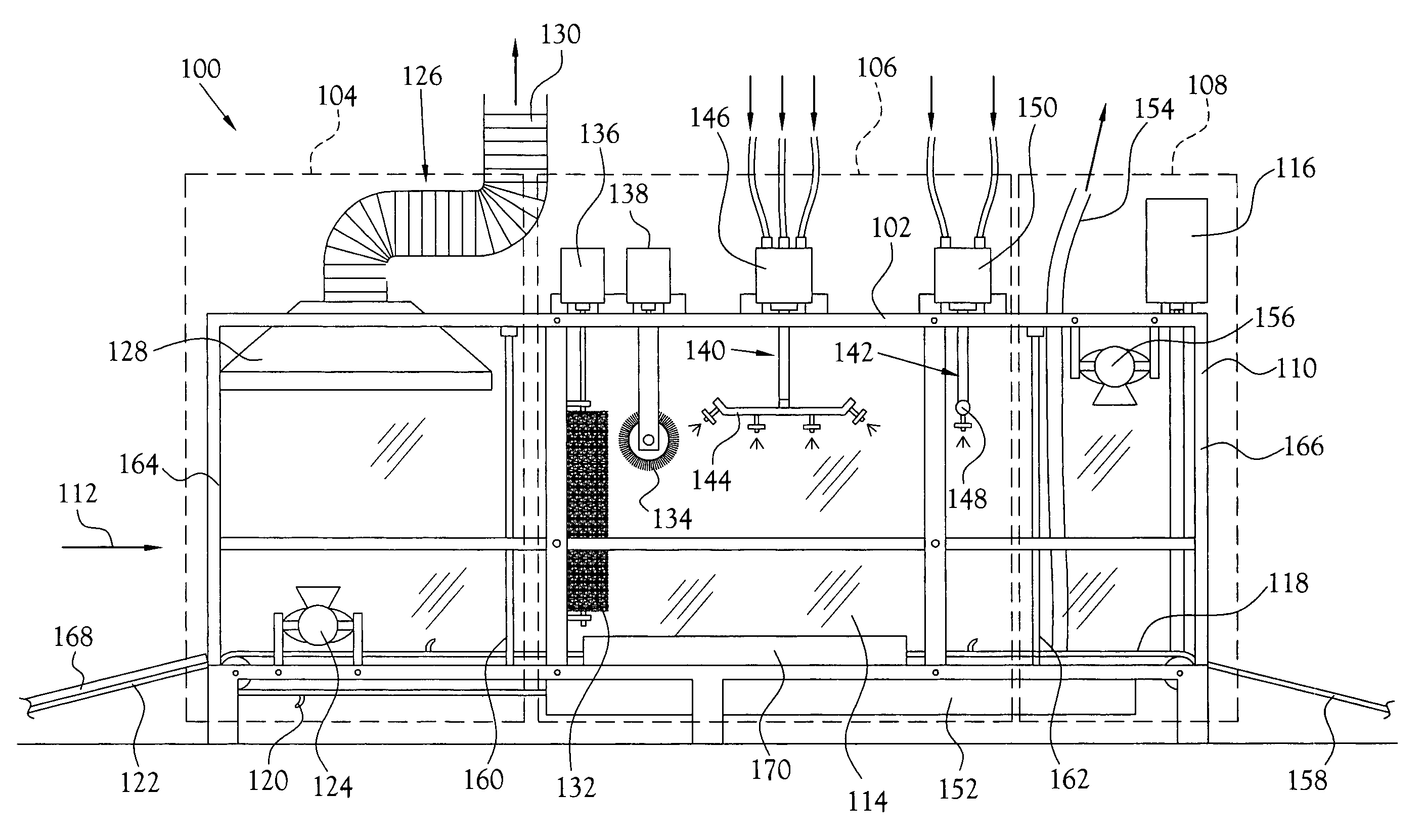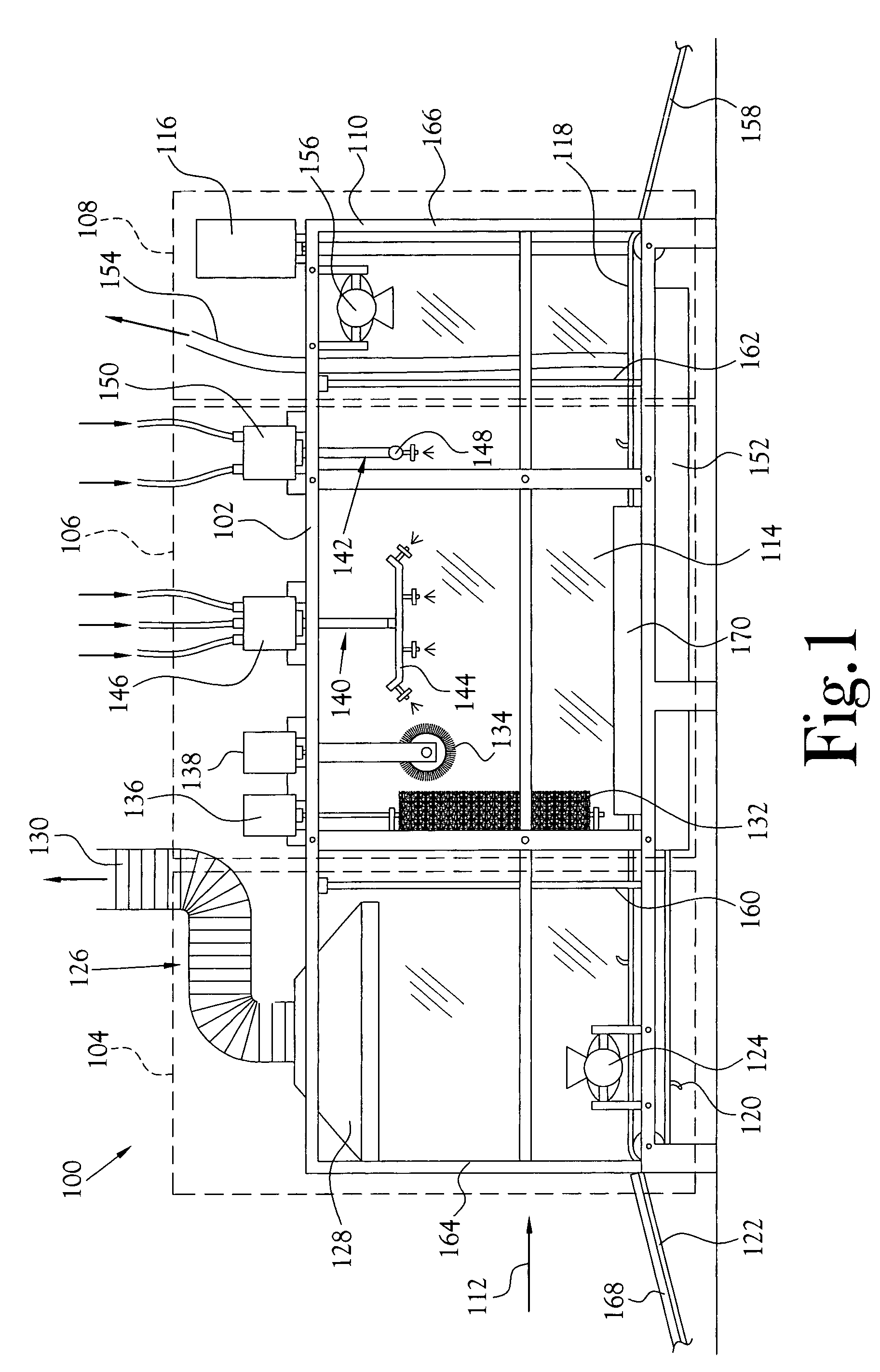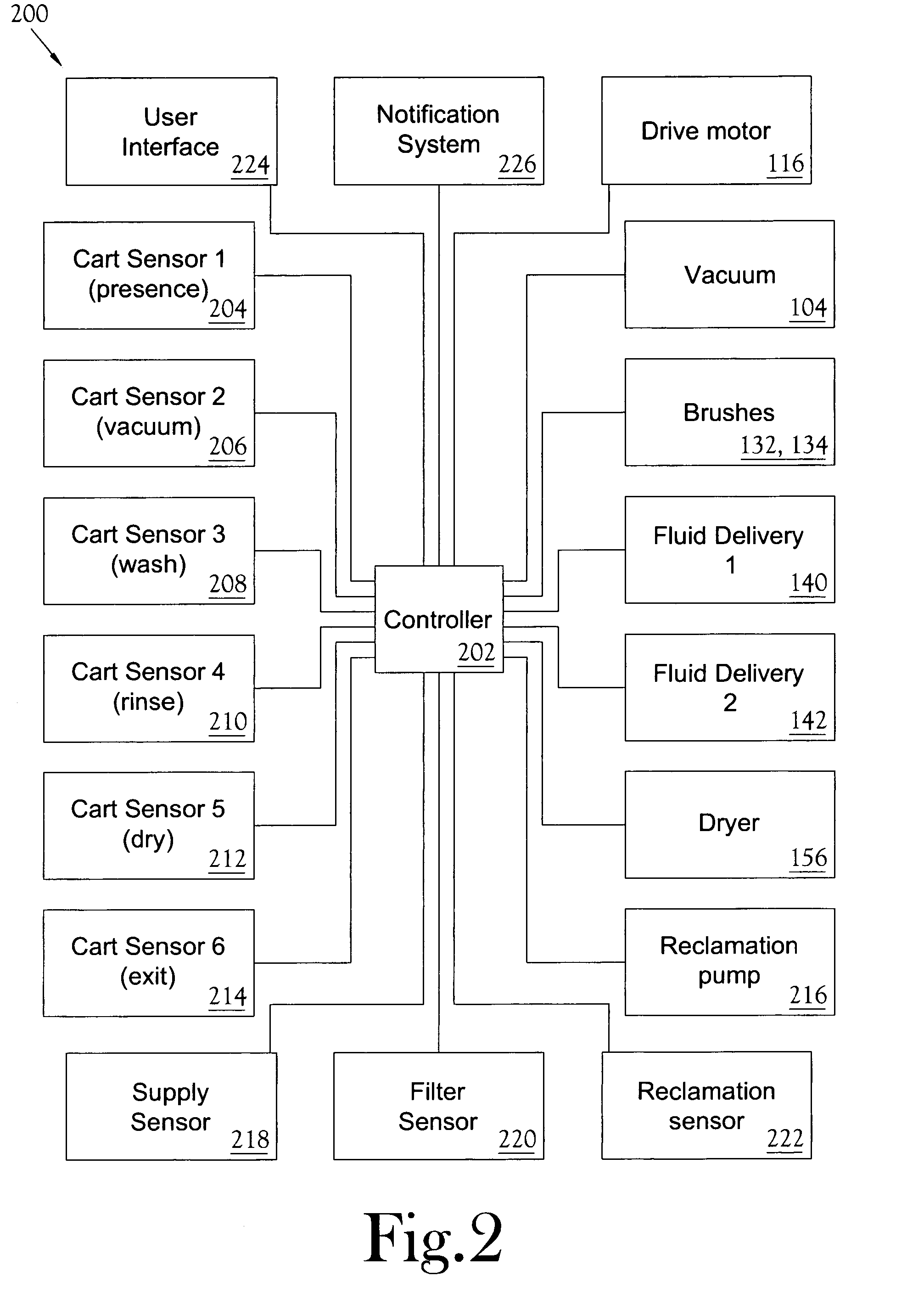Automatic cart wash apparatus
a cart wash and automatic technology, applied in the direction of vehicle drying apparatus, cleaning equipment, cleaning liquids, etc., can solve the problems of uncooked items, the possibility of carts becoming soiled, and the danger of uncooked items, so as to preserve the integrity of the cleaning process
- Summary
- Abstract
- Description
- Claims
- Application Information
AI Technical Summary
Benefits of technology
Problems solved by technology
Method used
Image
Examples
Embodiment Construction
[0039]An automatic cart wash apparatus is shown and described at 100 in the figures. The automatic cart wash apparatus 100 provides much improved cleaning of stock carts on a regular basis over manual cleaning by store employees. The automatic cart wash apparatus 100 includes three main stages: a debris removal (vacuum) stage, a cleaning (wash, sanitize, rinse) stage, and a drying stage. The debris removal stage uses forced air and / or suction to remove solid and generally non-soluble waste, such as a paper or other trash and debris, from a stock cart. The cleaning stage uses a selection of detergents, sanitizing agents, and rinse agents to remove soluble or sticky waste, such as food and liquids, and to kill germs, viruses, and bacteria present on the cart. The drying stage removes excess liquids from the cart making it ready for use by the next customer.
[0040]FIG. 1 illustrates one embodiment of the automatic cart wash apparatus 100. The automatic cart wash apparatus 100 is shown a...
PUM
 Login to View More
Login to View More Abstract
Description
Claims
Application Information
 Login to View More
Login to View More - R&D
- Intellectual Property
- Life Sciences
- Materials
- Tech Scout
- Unparalleled Data Quality
- Higher Quality Content
- 60% Fewer Hallucinations
Browse by: Latest US Patents, China's latest patents, Technical Efficacy Thesaurus, Application Domain, Technology Topic, Popular Technical Reports.
© 2025 PatSnap. All rights reserved.Legal|Privacy policy|Modern Slavery Act Transparency Statement|Sitemap|About US| Contact US: help@patsnap.com



